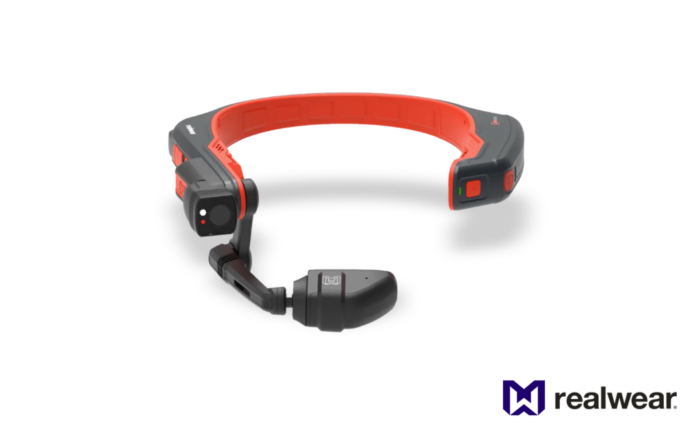Augmented Reality (AR) stands at the forefront of immersive technology, reshaping our interaction between the physical and digital realms. Regarded by many as a pivotal step toward realizing the Metaverse, AR continually evolves, advancing its integration, and finding its way into the latest hardware like iPhones, marking an ongoing improvement in its development.
In the Social Metaverse sphere, AR’s impact is notable in entertainment, notably through the widely acclaimed Pokemon Go, which catapulted AR applications into the mainstream. Simultaneously, industries are embracing AR, employing it within enterprise and industrial domains. Its incorporation into standalone and mixed reality headsets empowers industry professionals to mitigate risks, heighten efficiency, and refine industrial processes. The enterprise sector witnesses AR utilization for workplace training and observes a burgeoning trend in retail.
The trajectory of augmented reality appears promising. This article aims to spotlight leading Augmented Reality companies, spotlight their successful projects, and delve into the challenges faced in AR development along with the corresponding solutions.
7 Top Augmented Reality Companies
1. NuEyes
NuEyes stands out as a pioneering technology company, leveraging its patented software to craft augmented reality and virtual reality smart glasses tailored specifically for the healthcare industry. The NuEyes PRO 3e smart glasses have earned acclaim for their exceptional lightweight design, ensuring comfort for extended wear throughout the day. Equipped with high-definition screens and immersive stereo sound, these glasses deliver an unparalleled visual and audio experience.
Whether used for visualizing data or immersing in entertainment, these glasses offer an impeccable screen for various applications. Furthermore, when seamlessly connected to a 5G device, users can relish entertainment and gaming experiences on a massive 104″+ screen, accessible from virtually anywhere they go.
2. Realwear
RealWear holds a prominent position as the global frontrunner in assisted reality head-mounted displays tailored for frontline workers. Specializing in delivering industrial-grade wearable devices, RealWear excels in facilitating hands-free communication and seamless access to information within industrial settings. Notably, their hardware lineup, including the HMT-1, HMT-1Z1, and HMT-1B, stands out for their specific design geared towards augmented reality (AR) and mixed reality (MR) applications within industrial environments.
These cutting-edge devices boast head-worn displays, integrated cameras, and voice control functionalities, empowering workers to effortlessly access digital information and collaborate remotely while maintaining the freedom of their hands for crucial tasks. This unique blend of features equips industrial professionals with the tools needed to enhance productivity and efficiency in their work environments.
3. Niantic
Niantic pioneers mapping and security-enhanced augmented reality platforms designed for current and future AR hardware models. Their overarching aim revolves around leveraging state-of-the-art technology to enhance human experiences within the real world. Central to their vision are products that stimulate movement, encourage exploration, and foster face-to-face social interaction.
Originally incubated within Google in 2010, Niantic has since evolved into an independent entity, counting Nintendo, The Pokémon Company, and Alsop Louie Partners among its significant investors. The core mission remains rooted in crafting games that motivate players to venture outdoors, enabling them to enjoy themselves while gaining insights into new locations, forging connections, and deepening their understanding of the world around them.
Their notable creations include Ingress, a real-world mobile game captivating millions of players across more than 200 nations and territories, amassing over 20 million downloads. Furthermore, their groundbreaking development, Pokémon GO, achieved remarkable success within its inaugural year, surpassing 750 million downloads and establishing new global records. Through these ventures, Niantic continues to redefine gaming experiences by merging entertainment with real-world engagement and exploration.
4. CYVision
CY Vision leads the way in crafting advanced 3D Augmented Reality Head-Up Displays (AR-HUDs) tailored for next-generation vehicles. Their specialization in computational holography revolutionizes vehicle windshields, seamlessly transforming them into easily accessible and constant displays that relay vital information to drivers with just a glance.
Headquartered in both Mountain View and Istanbul, CY Vision is a pioneering vision systems and applications company dedicated to innovating a groundbreaking platform for AR and VR experiences. Their unique approach fosters a transformative shift, enabling fully immersive and true-to-life VR encounters, alongside delivering exceptionally high-quality AR interactions.
This revolutionary platform positions CY Vision at the forefront of reshaping the automotive landscape. Their integration of cutting-edge augmented reality solutions into vehicle windshields empowers drivers with essential information while they continue to explore new frontiers in immersive virtual experiences.
5. GlassUp
GlassUp, an Italian startup established in 2012, specializes in the development and production of augmented reality goggles specifically tailored for industrial applications. Their flagship product, the GlassUp F4, debuted in February 2017. These AR eyewear devices serve as indispensable tools for professionals in various industries, offering time-saving functionalities and enhanced efficiency.
The F4 goggles encompass the features of a protective mask while doubling as an interface for accessing a diverse range of content such as videos, images, instruction manuals, and other relevant materials crucial to supporting work processes—all hands-free. This hands-free functionality allows users to focus entirely on their tasks, thereby enhancing productivity.
6. Almer Technologies
Almer stands at the forefront of innovation, specializing in the meticulous design and development of compact, lightweight AR devices. These devices are meticulously crafted to offer not just augmented reality capabilities but also boast top-tier image display quality. Their primary aim is to redefine communication dynamics between frontline workers and experts, bridging the gap through advanced technology.
The essence of Almer’s offerings lies in simplifying and enhancing communication channels for frontline workers. These specially engineered AR devices serve as more than just tools; they act as a seamless interface, enabling frontline workers to access real-time information and guidance while on the job.
7. ARTGlass-US
ARTGlass-US is an innovative information technology company that specializes in cultural heritage informatics, augmented reality, technology, and smartglasses. Their primary focus revolves around developing wearable AR solutions tailored specifically to the unique requirements of cultural heritage sites and related industries. Established in 2017, the company is headquartered in Virginia, United States.
As a pioneering figure in the realm of augmented reality, ARtGlass-US leads the global arena for AR tours within cultural and historic sites, catering to millions of visitors worldwide. Leveraging their TourBuilder software and apps, the company empowers its clients to create immersive, educational, and unforgettable AR experiences for their guests.
By integrating cutting-edge technology with cultural heritage, ARtGlass-US redefines the way visitors engage with historical sites, offering a seamless blend of information, storytelling, and interactivity. Their commitment to providing tailor-made AR solutions reflects their dedication to enhancing the visitor experience and preserving the rich history embedded within these sites.
Services that Augmented Reality Companies Offer
Augmented reality (AR) companies offer a diverse array of services tailored to various industries and sectors. One key focus area is the development of AR hardware, such as smart glasses and headsets, designed to enhance user experiences in specific fields like healthcare, industrial settings, and cultural heritage sites. These companies excel in creating lightweight, high-quality AR devices that offer real-time information display, hands-free functionality, and seamless communication between frontline workers and experts.
Moreover, AR companies provide comprehensive software solutions, ranging from AR content creation platforms to specialized applications. These software offerings enable clients to design, build, and deploy immersive AR experiences for diverse purposes, such as educational tours at historic sites, remote assistance for industrial maintenance, and on-the-job training in various sectors.
Beyond hardware and software development, AR companies often extend their expertise to offer consulting and customization services. They collaborate closely with clients to understand their unique needs and develop tailored AR solutions that align with specific industry requirements. This might involve creating bespoke AR applications, integrating AR technology into existing systems, or providing guidance on optimizing AR experiences for maximum impact and user engagement.
Ultimately, augmented reality companies play a pivotal role in revolutionizing how individuals interact with technology and their surroundings. By offering a suite of services encompassing hardware development, software solutions, and personalized consulting, these companies drive innovation across industries, unlocking new possibilities for immersive, interactive, and transformative AR experiences.
Successful projects implemented by AR companies
AR companies have spearheaded numerous successful projects that showcase the transformative potential of augmented reality across diverse sectors. One prominent area is in the realm of entertainment, epitomized by games like Pokemon Go, developed by Niantic. This AR-based game revolutionized mobile gaming, seamlessly blending virtual elements with the real world, engaging millions of users globally and reshaping the gaming landscape.
In the industrial sphere, companies like RealWear have implemented AR solutions to bolster efficiency and safety for frontline workers. Their assisted reality head-
Moreover, AR companies like ARtGlass have made significant strides in cultural heritage preservation. Their AR tours and experiences at historic sites, powered by TourBuilder software, have enriched visitor engagement, offering immersive storytelling and educational content that breathe new life into ancient landmarks.
In healthcare, NuEyes stands out with its AR smart glasses tailored for visually impaired individuals. These glasses provide enhanced visual assistance, allowing users to navigate their surroundings and access information through AR overlays, significantly improving their quality of life.
Additionally, companies such as CY Vision and Almer have excelled in crafting AR devices specialized for automotive and industrial use, respectively. CY Vision’s AR-HUDs redefine the driving experience, offering heads-up displays that deliver essential information to drivers, while Almer’s lightweight AR devices facilitate seamless communication among frontline workers, enhancing productivity and safety.
These successful projects exemplify the versatility and impact of AR technology across various sectors, showcasing how AR companies are pushing boundaries to create meaningful, innovative solutions that enhance user experiences and transform industries.
Challenges and Solutions in Augmented Reality Development
Augmented reality (AR) development presents various challenges, and AR companies continuously innovate to overcome these hurdles.
One major challenge is hardware limitations. AR experiences demand powerful devices capable of rendering 3D graphics and processing real-time data. However, achieving this while maintaining portability, battery life, and affordability poses a significant challenge. Companies address this by refining hardware designs, optimizing performance, and leveraging advancements in processing power to create more efficient AR devices.
Another hurdle is creating compelling and realistic AR content. Designing immersive experiences that seamlessly integrate virtual elements with the real world requires expertise in spatial mapping, object recognition, and environmental understanding. To tackle this, AR developers employ advanced computer vision algorithms, machine learning, and sensor technologies to improve accuracy and realism in AR overlays.
Interoperability and standardization also pose challenges in AR development. With multiple platforms, devices, and software frameworks available, achieving compatibility and consistency across different AR systems can be complex. Companies work on establishing industry standards, promoting open-source development, and collaborating with other stakeholders to ensure better interoperability among AR technologies.
Privacy and security concerns are challenges in AR, particularly regarding data collection, user privacy, and potential vulnerabilities in AR systems. Companies prioritize implementing robust security measures, encryption protocols, and user data protection practices to address these concerns and build trust among users.
Finally, user adoption and acceptance remain critical challenges. Educating users about AR technology and its practical applications, ensuring user-friendly interfaces, and addressing concerns about usability and social acceptance are ongoing focuses. AR companies conduct user testing, provide intuitive interfaces, and create engaging content to enhance user experience and drive broader adoption.
By continuously addressing these challenges through technological advancements, innovation, collaboration, and user-centric design approaches, AR companies strive to unlock the full potential of augmented reality and deliver impactful experiences across various domains.

